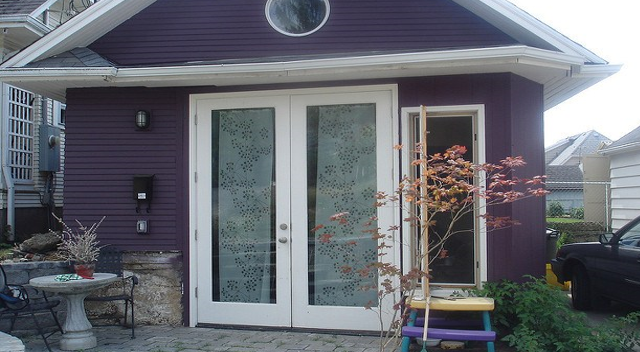
Accessory Dwelling Units (ADUs)
Accessory dwelling units: what they are and why people build them
An accessory dwelling unit is a really simple and old idea: having a second small dwelling right on the same grounds (or attached to) your regular single-family house, such as:
- an apartment over the garage
- a tiny house (on a foundation) in the backyard
- a basement apartment
Here are two examples, one above a garage and the other a small cottage.
Regardless of its physical form (backyard cottage, basement apartment, etc.), legally an ADU is part of the same property as the main home. It cannot be bought or sold separately, as a condominium or a dwelling on wheels might be. The owner of the ADU is the owner of the main home. (For an extremely rare exception see here).
Though accessory dwellings are an old idea (think of the old alley apartments in DC, or the carriage houses you see in fine old Seattle homes), they fell out of favor in the middle of the 20th century. Now, however, they’re coming back, and they have lots of names. Planners call them ADUs (Accessory Dwelling Units), but they’re also known as granny flats, in-law units, laneway houses, secondary dwelling units, and a hundred other names. ADUs can be tiny houses, but tiny houses aren’t always ADUs
People build them for lots of reasons, but the most common goals, according to one study, are gaining income via rent and housing a family member.
Flexibility in housing makes sense for environmental, lifestyle, and financial reasons. Though many people buy houses and live in them for decades, their actual needs change over time. But the way that houses are currently built doesn’t reflect those changes, especially the way households may spend decades with just 1 or 2 members. Many American houses are too big for 1- or 2-person households, which is too bad, because size is probably the biggest single factor in the environmental impact of a house.
If you have a reasonably sized house, and an even more reasonably sized ADU, you’ve likely got a pretty green combination with some social benefits as well. You could have your best friend, your mother, or your grown kid, live with you. This kind of flexibility and informal support could really help as the nation’s population ages. Most people want to stay in their homes as they age, but finances and design can be problematic. An ADU could help aging people meet their needs without moving.
In many localities you can get legal rental income from a permitted ADU, or, if you want, you can live in the ADU and rent out the other dwelling. That should add a lot of flexibility to finances.
So that’s the potential this form of housing has. Here on this site we’re going to focus on real ADU stories and data-driven research to figure out if ADUs are living up to that promise. We’re also going to recognize that ADUs are major construction projects, and do what we can to guide you through design, financing, permitting, and so forth. We hope it helps.
